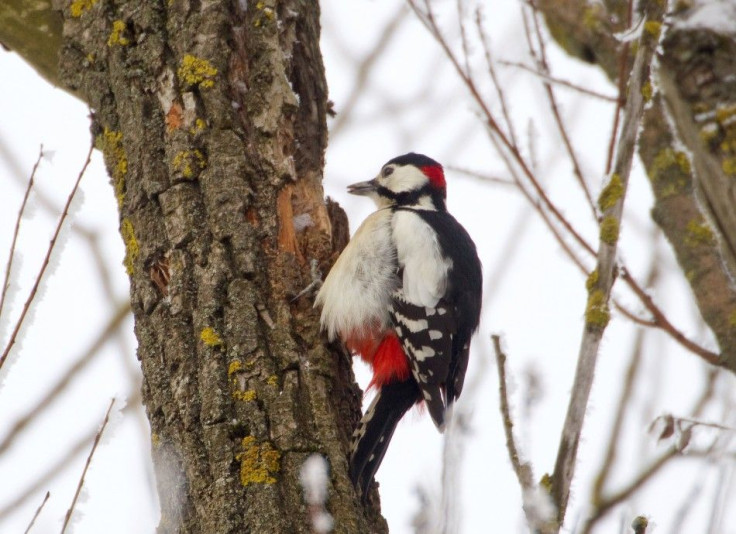Why Don’t Woodpeckers Get Brain Damage?

Woodpeckers are able to pound their heads against trees with a force that would cause any other animal debilitating brain damage, but which leaves them unharmed. Scientists have long been baffled by woodpeckers' curious resilience, and flirted with theories -- powerful muscles, particular pecking techniques -- to help explain the phenomenon. It now appears that the woodpecker's secret is in its skull, according to a new study.
Researchers compared the greater spotted woodpecker to the Mongolian skylark, a similarly sized bird that does not drill into trees like the woodpecker. Using advanced imaging techniques, researchers found that microscopic differences in the woodpecker's skull give it the ability to withstand forces in excess of 1,000 times that of gravity, known as g-force's or g's. Exposure to 100 g's or more is considered deadly to humans, according to an Ohio State University study.
The key is in the thick, spongy bone that surrounds the woodpecker's brain, made up of tiny beam-like tissue called trabeculae. The tissue forms a tightly woven mesh that acts as armor plating around the bird's head. While the skylark has a similar bone around its brain, it is not as tightly woven, so it does not offer as much protection.
The cranial bone of the woodpecker achieves a higher ultimate strength and resistance to impact injury as a result of its unique microstructure, the researchers, led by Fan Yubo, professor of biomechanics at Beihang University, wrote. These distinctive mechanical properties... provide an excellent resistance to head impact injury at a high speed.
The woodpecker's beak also contains more trabeculae than the skylark's beak, which makes it more flexible and allows it to deform slightly, absorbing the shock of hitting the tree that would otherwise rattle its brain.
Woodpeckers represent prime examples of adaptive evolution by natural selection, the researchers wrote. As the impact load is primarily absorbed and distributed by the beak, its transmission to the brain would be decreased.
Other adaptive evolution woodpeckers display includes a third inner eyelid that acts as a seatbelt and keeps the eye from popping out of the head during repeated banging, according to a 2007 study, published in the British Journal of Ophthalmology.
The researchers hope their findings will pave the way for better design and optimization of protective headgear for humans. More than 1 million people sustain traumatic brain injury every year, most commonly from falls and car accidents, according to the Centers for Disease Control and Prevention. Traumatic brain injuries can cause memory loss, difficulty speaking and emotional problems.
[Woodpeckers efficiently] avoid head impact injury and may provide potential clues to the prevention of brain injury using bio-inspired designs of shock-absorbing materials, the authors wrote.
The journal Science China Life Sciences published the study on Tuesday.
© Copyright IBTimes 2024. All rights reserved.





















